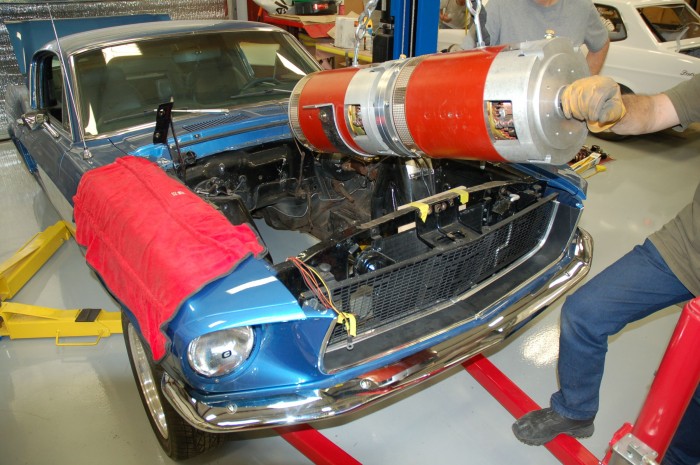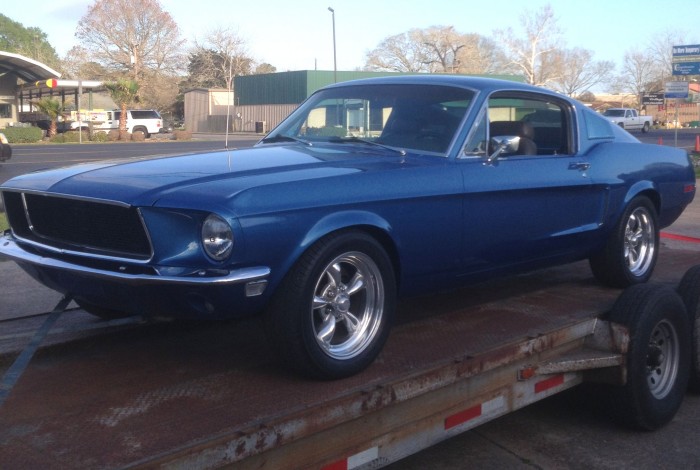Classic Mustang Gets the Tesla Treatment!

–by Justin Banner
An article popped up on both Hemmings and Jalopnik a while back about a guy who decided to swap out the 289-cubic-inch Ford V8 in his 1968 Ford Mustang fastback. Some readers were up in arms for getting rid of the V8 and going electric power. They thought that the soul was gone from the classic Mustang without the rumble. I’m actually in favor of this, but I’m a bit weird when it comes to new technology. Let’s take a look at why this makes sense, and then you can chime in with comments.
First, I’m not the guy who puts in an electric motor on something because it’s environmentally friendly. I’m not really a global warming alarmist, and I know that many parts of the U.S. still use coal and natural gas for making electricity at power plants. I also know that current battery chemistries are not good for the environment in both disposal and in finding it. To say that you’re switching to electric power for the good of the planet is the great lie of the environmentalist.
There is something an electric motor can do that no gas engine can: create torque the moment it takes off. Electric motors create peak torque at zero RPMs.
However, there is something an electric motor can do that no gas engine can: create torque the moment it takes off. Electric motors create peak torque at zero RPMs. Yes, you read that correctly. If you aren’t familiar with electric motors, the moment you punch it, the electric motor is making torque and scorching the wheels as you rip through the gears … well, if you have a gearbox. Thanks to never having to worry about stalling and instant torque, an electric car doesn’t always need a transmission. It definitely doesn’t need a clutch.
Many worry about not being able to enhance the performance of the electric motor, but that’s nothing to worry about, either. It takes a different way of thinking. With brushed-style motors, you can modify the brushes, change the amount of windings around the armature — fewer equals more speed, while more equals more torque. You can also change the timing of the motor and get brushes of different compounds. There really is a lot you can do to a brushed motor for improved performance. I haven’t even touched on siamesed motors, brushless motors, and the controllers yet. Don’t worry; if you want to make your motor perform better and change its character, you’ve got nothing to worry about.

Range anxiety is something new electric-vehicle drivers get worried about. This is where having a transmission can be a great thing, for it lowers the speed of the motor and uses less energy. So, if you’re contemplating a swap, don’t discard your transmission yet. If anything, find a manual transmission as it will be the least parasitic and probably the most fun.
Just be sure it can take the torque your motor will put out, which can be up to 900 lb-ft on some of the best single-motor swaps. Mitch Medford, the guy dropping electric motors into his ’68 Mustang, will be using a pair of nine-inch Warp9 motors good for 1,800 lb-ft of torque.
Now you see why I love electric motors.
